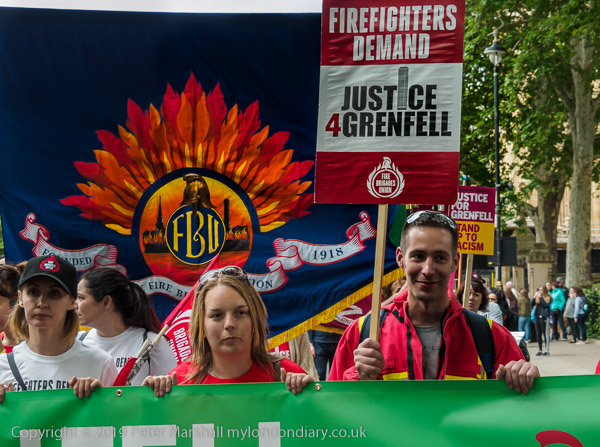
Grenfell was very much on our minds in the middle of June, around the second anniversary of the fire in which at least 72 people died, as it is now with the publication of the first part of the Grenfell Inquiry report. As well as the monthly silent march close to the tower on the actual anniversary, there was also a solidarity march the following day in Westminster.
Grenfell tower was built to resist the spread of fire. A fire in any single flat should have been confined to that flat for two hours, with a door designed to resist fire for at least an hour and a half. It had a single staircase that should have remained smoke free for two hours, allowing the safe exit of residents and for firefighters to climb up to fight the fire and rescue those living there.
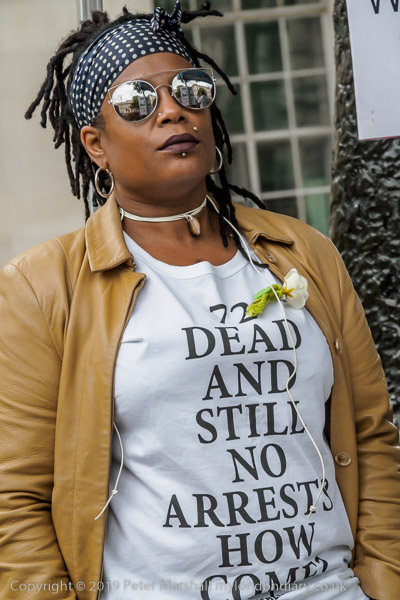
Had Grenfell been properly maintained and kept as designed there would have been no deaths. The tower was designed so that the ‘Stay Put’ policy was safe, but the building had been altered in various ways – including but not only the addition of highly flammable and incorrectly installed cladding – which made it a death trap. Residents had pointed this out to before the fire, but their complaints had been ignored and those making them threatened.
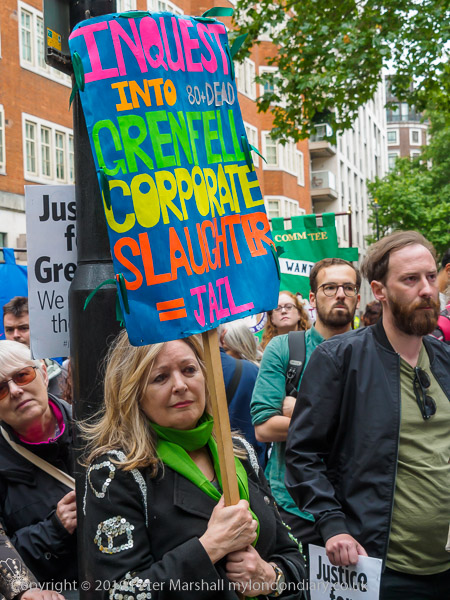
Had the building been properly inspected these faults would almost certainly have become clear. But we had a government that considered safety regulations as “red tape” and saw inspections as an opportunity for private enterprise rather than public good. And the owners and managers of the building were interested in cutting costs and making it look more attractive to people on the outside rather than any concern about the safety of the residents.
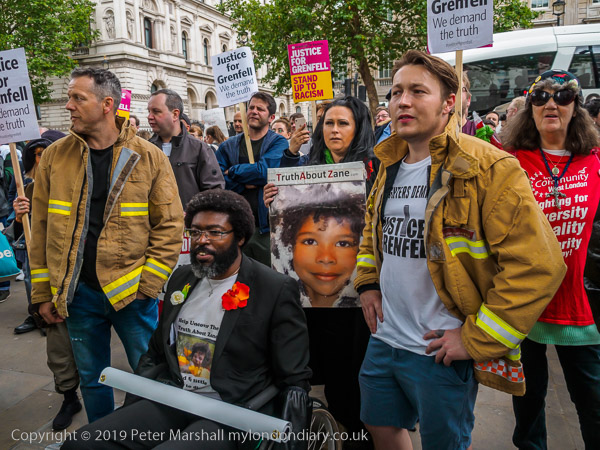
The fire at Grenfell should have been a minor incident, quickly dealt with and causing no injuries of death, rather than the inferno we saw which killed so many. The inquiry suggestion that more could have been saved had the ‘stay put’ policy been abandoned earlier appears unsound. Had there been no such policy in place at the start of the fire more might well have escaped, but it is a general policy in place across all high rise residential buildings designed and built to the same standards as Grenfell and for good reason.
It’s failure at Grenfell was not the fault of the fire brigade, and by the time it was clear to firefighters that the building had failed the staircase, the only means of escape was filled with dense toxic smoke. Firefighters needed breathing apparatus and risked their lives to try and rescue those trapped inside. The inquiry report seems to deliberately contradict the evidence of experts including those who were actually there fighting the fire.
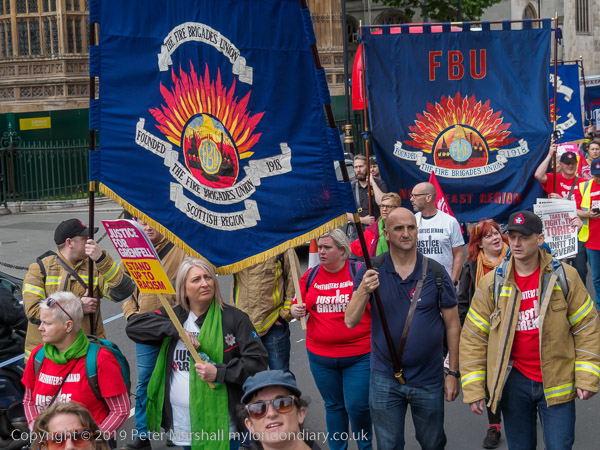
Many firefighters were at this march, including some who had risked their lives to save those inside Grenfell, but many more from around Britain. There are legitimate criticisms in the report about the equipment they had, though these are largely down to cuts made by the government and London Mayor Boris Johnson rather than the fire chiefs. The FBU had certainly warned that the cuts would mean more people dying and this event proved them right. Firefighters going into the building knew they were risking their lives – and as they went in were instructed to write their names on their helmets to make their dead or unconscious bodies recognisable. Thanks to their skill and training – and luck – no firefighters died and they rescued many.
All photographs on this and my other sites, unless otherwise stated, are taken by and copyright of Peter Marshall, and are available for reproduction or can be bought as prints.
There are no adverts on this site and it receives no sponsorship, and I like to keep it that way. But it does take a considerable amount of my time and thought, and if you enjoy reading it, please share on social media.
And small donations via Paypal – perhaps the cost of a beer – would be appreciated.